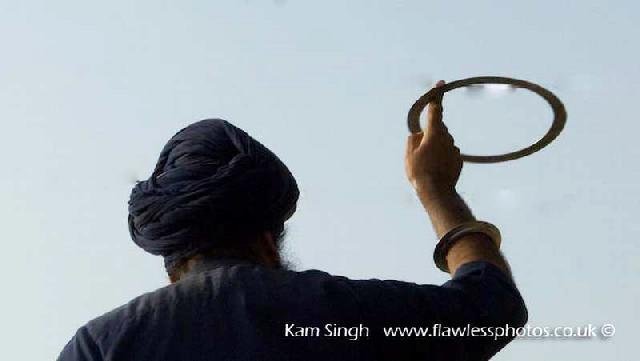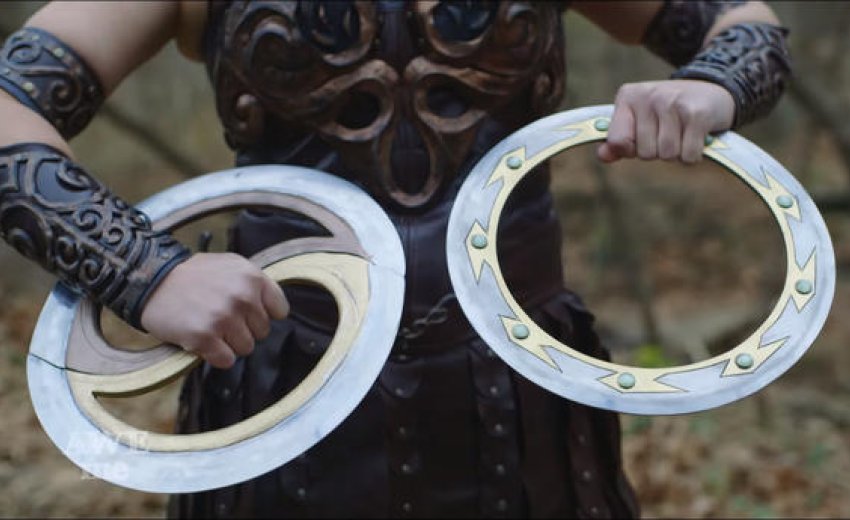Monday, 08 September 2008: In a ground-breaking new series, technology and history collide head-on in ten action-packed episodes, where we witness first-hand the power of pivotal world-changing weapons.
 Weapon Masters explores the history and science of ten weapons of the ancient world. Hosting the series is internationally known weapons expert and historian, Mike Loades. In each hour-long episode, Mike travels to a different international location to examine one particular ancient weapon and learn first-hand about the cultures where the weapon was used. He is assisted by an expert who demonstrates the techniques behind each weapon. He then challenges his co-host and master craftsman, Chad, to improve upon it using modern manufacturing techniques and materials.
Weapon Masters explores the history and science of ten weapons of the ancient world. Hosting the series is internationally known weapons expert and historian, Mike Loades. In each hour-long episode, Mike travels to a different international location to examine one particular ancient weapon and learn first-hand about the cultures where the weapon was used. He is assisted by an expert who demonstrates the techniques behind each weapon. He then challenges his co-host and master craftsman, Chad, to improve upon it using modern manufacturing techniques and materials.
In India, Mike explores the history of the steel quoit weapon used by the Sikhs and known as the Chakram or Chakkar. This ancient Indian projectile weapon inflicts serious damage with its razor sharp cutting edge.
Mike travelled to Punjab to meet with Nidar Singh Nihang, a master swordsman who has spent the last twenty years researching the history, philosophy, and unique warrior traditions of the Akali-Nihang Sikh. With assistance from the Akali-Nihang community in Punjab, Nidar Singh taught Mike the various chakram techniques used in battle by the Akali-Nihangs; “In India I met the Akali Nihangs, a nomadic sect of Sikh warriors, from whom I learned various techniques for throwing the chakram – a razor edged steel battle quoit – both on foot and from horses and elephants!”
“Although it was my first experience with the chakram I managed to throw one 40 yards with no trouble at all. The chakram has an airfoil cross section and you can see it working - it really does fly. And it is surprising how quickly one can become accurate with it at shorter ranges.
 Nidar Singh Nihang, an expert in Indian martial arts, demonstrates many different techniques for throwing the ‘chakkar’, as the chakram is more commonly known in the Punjab. The tajini method of spinning it on the index finger is the most well known but there are other methods, such as bowling it underarm as the warrior approaches an enemy, throwing it on the move or the more powerful diagonal throws from left to right and right to left.
Nidar Singh Nihang, an expert in Indian martial arts, demonstrates many different techniques for throwing the ‘chakkar’, as the chakram is more commonly known in the Punjab. The tajini method of spinning it on the index finger is the most well known but there are other methods, such as bowling it underarm as the warrior approaches an enemy, throwing it on the move or the more powerful diagonal throws from left to right and right to left.
“As well as the different types of throw”, said Mike “there are many different types of chakram - from the standard ones around 9 -10 inches in diameter to small bracelet sized ones worn on the forearm and flicked at an enemy's face at close quarters with an action similar to flicking a deck of cards. At the other end of the scale are the large chakrams of two feet diameter, which are worn around the neck. Nidar Singh showed me a technique for deploying these from the second or third ranks behind the front line when engaged in hand-to-hand fighting - they are thrown almost vertically to descend on the heads of the enemy’s front line.”
 Mike also learnt from a traditional Indian blacksmith the techniques of forging the chakram from steel. “I also travelled to Patiala where I met the brothers Harinder and Mohinder Singh who showed me how to make a chakram in a traditional forge.”
Mike also learnt from a traditional Indian blacksmith the techniques of forging the chakram from steel. “I also travelled to Patiala where I met the brothers Harinder and Mohinder Singh who showed me how to make a chakram in a traditional forge.”
Back in the US, Chad aimed to better the traditional design and techniques with state-of-the-art materials and a mechanical launch mechanism.
- By Amandeep Singh Madra
- Images courtesy of Kam Singh (www.flawlessphotos.co.uk)
Schedule for Weapon Masters – Chakram
Discovery Knowledge (UK)
10 September 2008, 18:00:00
11 September 2008, 08:00:00
11 September 2008, 13:00:00
13 September 2008, 17:00:00
Discovery Military Channel (US)
Schedule not yet published.
See http://military.discovery.com/tv/weapon-masters/weapon-masters.html for updates.
